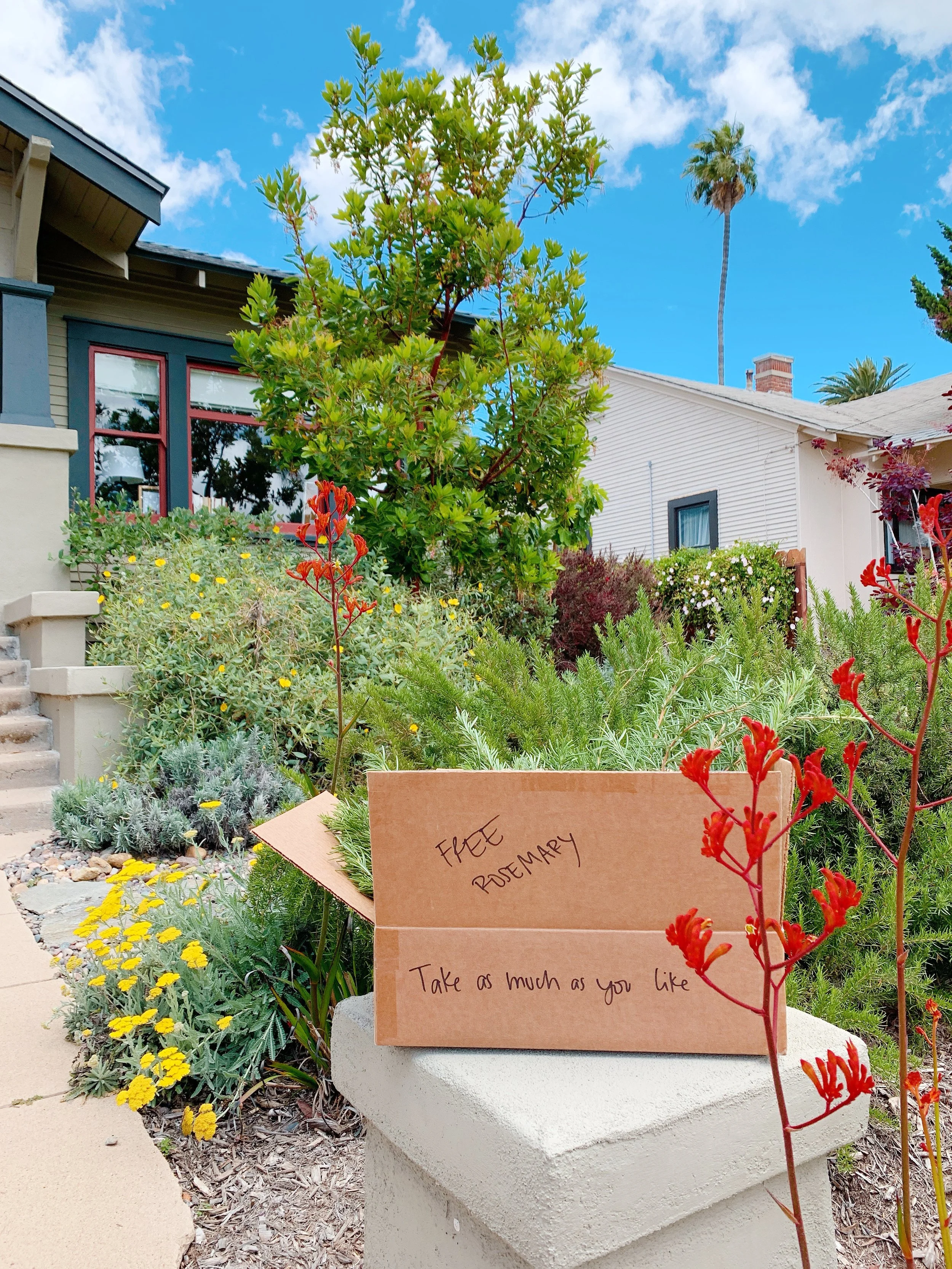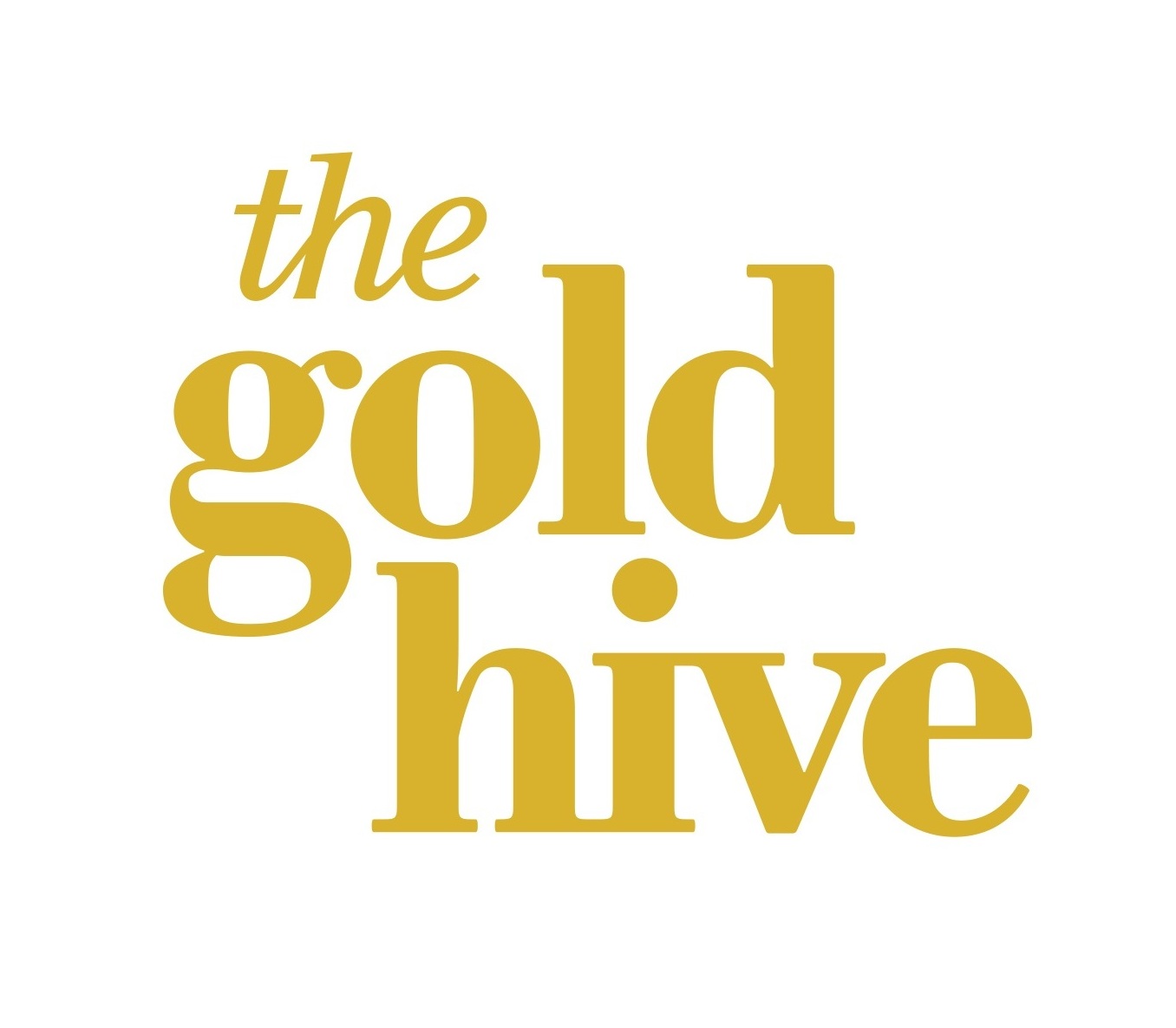The Goals for My Front Yard Garden - For the Love of Water, Food, Bees, and Flowers
/I have lots of front yard gardening posts to share with you, so I’m breaking them up into a few pieces. In this one, I want to share with you the goals for our front yard landscape. As a serial over-thinker, you can bet that I had multiple goals that I thought long and hard about when planning what to plant to replace our pathetic front yard. From trying to save the planet to wanting to enjoy all the pretty things, here are my garden goals.
Garden Goals
Low water
California has been in an extreme drought for over a decade. We only recently had our “drought” title lifted but it’s been pretty bad and will likely get really bad again. Conserving water has been a goal for residents and industries - and mandated by the State. For quite awhile, restaurants only provided water upon request. City buildings turned off their fountains and water features. Residents were given specific dates we could use the hose without facing a penalty. Water rates went up. And folks started tearing our their residential lawns or just shutting off irrigation all together. The effort to conserve water was really important because of its environmental impact on agriculture, wildlife, wildfires, and energy production. All of these reasons had water conservation near the top of my list for goals of our new garden. Side note, you can calculate your water footprint to see what you can do to reduce your use of this precious resource - guess what - the best way to reduce your water consumption has nothing to do with the things I listed above.
With our water restrictions, people started tearing out their grass lawns (which, when you think about it, grass lawns are pretty ridiculous) and a few different replacements became popular:
The astro-turf lawn - People started rolling out plastic grass in their yards because they didn’t have to water it. While it’s water-free, it’s ugly, petroleum-based, will only end up being plastic in a landfill one day, and it’s a big conductor of heat so it isn’t comfortable to touch. All around I hate everything about astro-turf.
The painted lawn - Really, people started painting their dead grass green. *eyeroll*
The rock yard - Instead of adding plastic grass, people opted for water-free yards with big boulders, pebbles, stones, and concrete pads. While it doesn’t use water, it doesn’t really do anything else. I personally find them drab.
The desert landscape - Succulents, cacti, and agave became popular replacements for lawns and water-loving plants. This is still a trend and a fine option, but I don’t personally love the look except for when I’m in Palm Springs. These plants also don’t maintain ecosystems for pollinators and wildlife the way other foliage can (more on that below).
Low-water lawns - There are a few grasses that happily exist with low water. Some folks have removed their typical greenery and planted grasses like buffalo grass instead. However, we didn’t need nor want a grassy lawn on our sloped front yard, so we didn’t consider this option. Also, with such a serious drought that everyone was aware of, grassy lawn owners were being shamed. I didn’t want to be confused for a water guzzler and get the stink eye from a fellow water conserver.
Psst! I installed a rain barrel and fill it in the summer with condensation from my air conditioner. Learn how to conserve that wasted water in my blog posts here.
Habitat Preservation & Pollination
None of the low-water options above provide refuge for wildlife, feed pollinating insects, or absorb carbon dioxide from the air. Creating a little ecosystem that would benefit butterflies, birds, insects, and the other creatures in my neighborhood was high on my list.
Bees are so important! They are responsible for pollinating over 1/3 of our world’s crops, so without them we couldn’t eat - but they’re in serious danger, and so are we. Learn more about the importance of bees and why they’re disappearing in this 16 minute TED talk. I promise it’s worth your time - it’s a great summary and has two takeaways for how you can help bees. (Spoiler: plant native flowers in your neighborhood and stop using pesticides!)
I’ve always loved bees and spent most of my childhood pool time scooping bees out of the water and blowing on them to revive them. While that only saved a few of them, providing a lush landscape of flowers in the front yard is a helpful way to save even more.
In addition to providing a habitat for bees, we wanted a yard that provided refuge for birds and other insects in our ecosystem. So, we went with a garden that uses native and/or adaptive plants. But I’ll get to that soon.
Native
We could plant a bounty of different types of plants, but in order for them to thrive in our climate, use less water, best provide for the pollinators, and do all the things we want them to, we had to pick the right plants. Native plants are those that naturally occur in a region without human involvement. They’re the plants that thrive in the climate, love being here, and benefit the specific species of animals and insects in the region.
I was using this book as my native plant bible because using plants that naturally occur in our region was really important to me for the sake of everything listed above. You can get a preview of San Diego native plants here - they may surprise you. However, we did incorporate plants that thrive in climates like ours so we have several Australian flora, too.
Food
Plants are pretty, but they’re even better if you can eat them. When selecting plants for their looks, I gave higher priority to the ones that also would bear fruit that we could eat. Think rosemary, figs, lemons, lavender, etc.
While (spoiler!) we did include those, I do wish we planted more edible varieties. The plan has been to have the front yard be pretty flowers and the backyard be our grocery store of fruit trees and vegetable beds, but I do wish I thought to plant more of these in the front yard. Several neighbors have their veggie beds in front of their house by the sidewalk and it’s exciting to see them putting that space to such valuable use.
The very first photo in this post is of a box of rosemary I’m sharing with neighbors. It’s so bountiful that we could never use it all. I love sharing it with neighbors or anyone that strolls by down the street. Sharing food from my plants would be the ultimate goal!
Shade
Our house faces west which is lovely for sunset viewing and ocean breezes, but that sunshine can also heat up our house a bit too much. The porch and deep eaves creates ample shade for the living room (gotta love classic craftsman architecture!). But the office doesn’t have as much shade, so the sun beats down into that room around 3pm in the summertime and it gets super hot and super bright. I talked in this post about how we use window coverings to remedy the issue, but the best shade always has been and always will be trees. Trees are simply the best and I welcome anyone to argue with me. Just plant the right tree in the right spot and you’ll instantly have a bounty of benefits including shade. (spoiler!) The tree we planted in front of the office has grown a TON in the last three years and I’m now writing to you from the comfort of my partially shaded office - it’s bliss. The tree is gorgeous, it’s not so bright in here, we don’t need to use the AC unnecessarily, and it’s all around wonderful. #ilovetrees.
Pretty
I’ll admit it, I like pretty things. Seeing lawns and the 5 types of alternatives (listed above) around town is very uninspiring. There’s also an abundance of overly manicured landscapes in San Diego that Ross and I don’t care much for. We yearn for a wild meadow, a dense forest, or just any natural area full of foliage. We just dig super lush and un-manicured landscapes full of life and color. Is that so much to ask??
Also, because San Diego never experiences a harsh winter or any snow, we have the privilege of being able to have evergreen plants. With evergreens, we get to enjoy green foliage all year long instead of a deciduous plant that goes dormant in the winter. People! We have flowers all. year. long. It’s great and I never need to buy flowers for arrangements because I can clip the ones right outside my door.
There were several other things we wanted like flowers that were aromatic, and we needed a walking path, and we wanted a certain color palette, but I’ll save all that for when we get into the nitty gritty. Until then, I hope this gives you a good idea of where my head was at when I started planning and picking plants. Stay tuned for a plant guide, a video tour, and all of the details on installation from the day the plants arrived to installing exterior lighting.


























